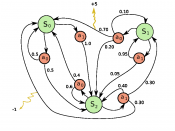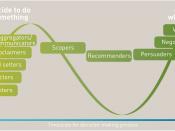"You can't always get what you want; you can't always get what you want; but if you try sometimes, you just might find, you get what you need" (Jagger & Richards, 1969). Conflict handled appropriately can increase the effectiveness of a team's decision-making process (Esquivel & Kleiner, 1996). For a team and leaders to be creative and innovative, skills that teach them to assimilate quickly and effectively are crucial.
Equivel and Kleiner (1996) discuss an interesting study conducted by Boulding. In this study, two groups of identical size and composition were formed to solve a complex problem. In one group, a person was instructed to play the devil's advocate. The group with the devil's advocate generated more ideas and performed considerably better. When each group was assigned another problem, the group was allowed to eliminate one member. Fascinatingly, the devil's advocate was removed from the group. The group did not realize that the devil's advocate had assisted the group in becoming more innovative and creative.
Eliminating a member from a group for being a troublemaker occurs in real organizations, reducing the organization's ability to be creative and innovative (Equivel & Kliener, 1996). As Jagger and Richards (1969) song states this group did not realize that by not getting what they want, they found what they needed.
According to Heathfield (2006), three actions should be avoided in conflict resolution. The first action is to not avoid the conflict and hope the conflict goes away.
If the conflict appears to have gone away without intervention, the problem will resurface when stress increases or a new disagreement occurs. An unanswered conflict is just under the surface in the work environment. The problem can rise to the surface at any time and at the worst possible moment. Avoiding the conflict is not an option.


